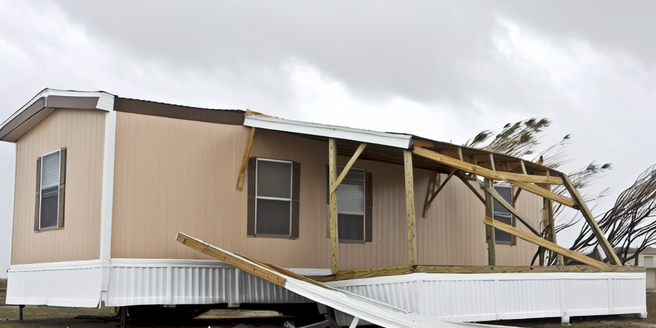
Understanding Severe Weather Risks
Severe weather poses a major threat to mobile homes. Understanding these risks is the first step towards securing your safety. From high winds to floods, severe weather events can cause significant damage. To lessen the impact of these devastating conditions, it’s advisable to reinforce your mobile home with materials suited to withstand severe weather. It’s essential to know your area’s common severe weather risks. Additionally, always keep an emergency preparedness kit ready so that you are prepared for any eventuality. Conduct a local weather patterns review and understand how various weather conditions affect mobile homes. This information is crucial in boosting the resilience of your mobile home against severe weather.
The Importance of a Well-Maintained Mobile Home
Maintaining your mobile home is not just about aesthetics; it’s a safety requirement. A well-kept mobile home can withstand extreme weather due to its strong structure and optimal condition of essential elements like windows, doors, and the roof. It’s crucial to regularly inspect and maintain the condition of your mobile home to identify and rectify minor issues before they become major problems. If overlooked, such issues could become vulnerabilities during severe weather, potentially endangering you and your home. Ultimately, keeping your mobile home safe is about creating a secure, long-lasting living environment capable of enduring harsh elements.
Creating a Disaster Preparedness Plan
Establishing a disaster plan secures family safety and entails plotting steps to take before, during, and after the event. Effective communication with all family members, extended relatives, and close friends ensures everyone can execute the plan in an actual disaster. Equally important is a readily available list of critical emergency contacts, including local authorities, hospitals, and vital community services. Home provisions should include enough non-perishable food and water for several days, with the amount varying according to household size. Moreover, remember to store adequate prescription medicines and a basic first-aid kit due to potential restricted access to pharmacies in the aftermath. Such steps comprise a robust disaster preparedness plan, heightening family safety when the unexpected befalls.
Effective Utilization of Mobile Home Safety Products
Mobile homes offer numerous ways to enhance their weather resilience. Several safety products can strengthen a mobile home’s defense against harsh weather conditions such as hurricanes, tornadoes, and heavy storms. These products, designed to strengthen the overall structure, extend the lifespan of your mobile home, and offer additional security.
Among these are storm shutters, hurricane straps, and anchoring systems. Storm shutters protect against potential weather-related harm by guarding windows from storm winds and hurricane debris. Hurricane straps secure your home’s structure, reducing the risk of roof or wall displacement due to strong winds. Crucially, anchoring systems ensure your mobile home stays grounded against natural forces, significantly enhancing overall security.
For an effective reduction of risks associated with severe weather, strategic implementation of these safety products is recommended. Through correct usage of storm shutters, hurricane straps, and anchoring systems, your mobile home’s safety against harsh weather conditions can be greatly improved, assuring a home well-prepared for any storm and offering peace of mind.
Handling Emergency Evacuation Procedures
Home security is paramount, but it’s critical to also know when and how to safely evacuate. Understanding ways of securing your home and the most effective methods of evacuation under circumstance is essential. When faced with natural or human-made disasters, sometimes leaving your home is undeniably the best option. Those living in areas prone to emergencies should be acquainted with the official evacuation routes, emergency procedures, locations of emergency shelters, safe places for different types of disasters, and the recommended steps during an emergency. This knowledge can help mitigate panic during a crisis. The decision to evacuate should be proactive, not a reactive one made in the last minute. Proper preparation can prevent a stressful rush and potential accidents during a disaster. Therefore, ensure your home’s security, familiarize yourself with official evacuation procedures, and be ready to act swiftly under threatening circumstances – your safety might depend on it.
Recovery and Aftermath: Returning to Your Mobile Home Post-Storm
After a disaster, it’s critical to conduct a thorough evaluation for structural damage when returning to your mobile home, involving professionals to confirm the safety and functionality of systems such as gas and electricity. Recovering and restoring your mobile home may initially seem daunting due to the overall strain, but a strategic, systematic approach to tasks such as salvaging remains and scheduling repairs can make the process less intimidating. Despite it being challenging, with patience, effort, and time, recovery from such a disaster is always possible, serving as a reminder that restoration is achievable even against heavy odds.
